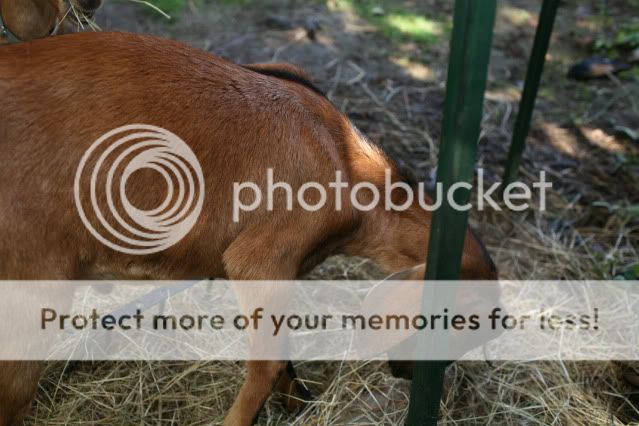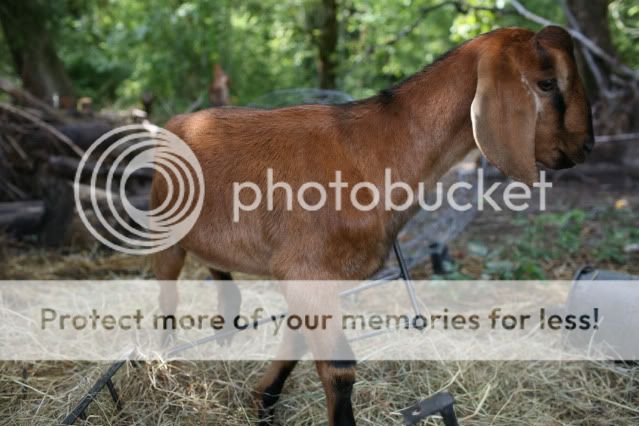- Aug 15, 2009
- 70
- 0
- 39
Here is the scoop. I would really appreciate any advice that anyone can offer about our goat Rocky. He is about 6 months old and has is suffering from a shoulder injury of some kind. I don't know enough about goat anatomy to even tell if it is muscular injury or joint. If I were to take a guess I would say it looks like it is dislocated, but not sure if that is possible.
He had a leg injury right after we got him (about 3 months old) but it was not visible when looking at it and he eventual healed on his own. Then about 1.5 months ago I noticed that he was limping again and this time I could see the injury on his right shoulder. I thought I would give him a bit of time to see if he would heal on his own again, but it isn't happening.
Here are a few pictures to show the injury:







It does feel swollen right below the shoulder on the upper leg.
I would appreciate any ideas or mainly if it is anything that we can treat at home. We are not in a position to be able to take him to the vet and if we cannot figure it out, will have to put him down.
Thanks so much!
He had a leg injury right after we got him (about 3 months old) but it was not visible when looking at it and he eventual healed on his own. Then about 1.5 months ago I noticed that he was limping again and this time I could see the injury on his right shoulder. I thought I would give him a bit of time to see if he would heal on his own again, but it isn't happening.
Here are a few pictures to show the injury:







It does feel swollen right below the shoulder on the upper leg.
I would appreciate any ideas or mainly if it is anything that we can treat at home. We are not in a position to be able to take him to the vet and if we cannot figure it out, will have to put him down.
Thanks so much!



